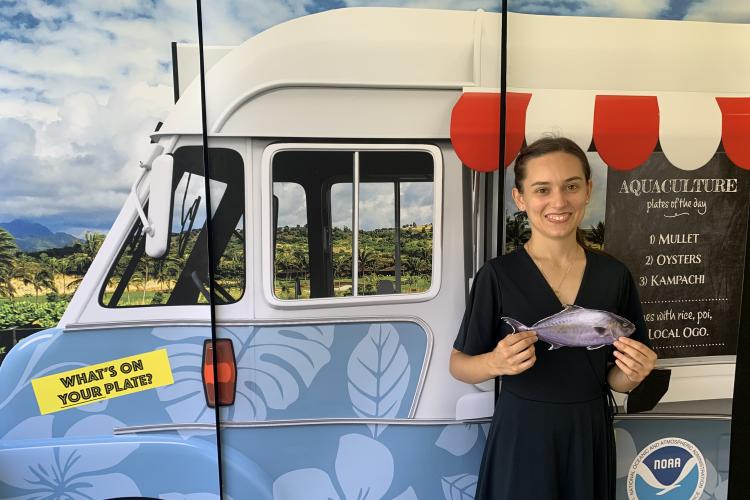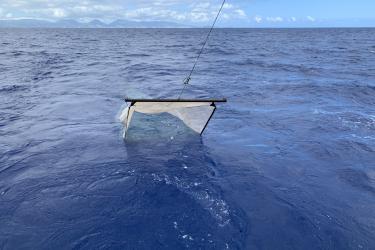I am Nicole Adamson, a rising 4th year undergraduate student studying marine biology at the University of California San Diego. This summer, I have had the opportunity to intern at NOAA Fisheries through the Ernest F. Hollings Scholarship. My mission was straightforward: to put together materials, including a webpage, brochure, and video, to explain the process of obtaining permits for offshore aquaculture in the Pacific Islands region. Little did I know that along the way I would gain career insight, valuable communication skills, and a peek behind the scenes of marine policy.
The Project
Coming into the Hollings Scholarship, my goal was to gain experience in the field of marine policy. Although it is exciting to work hands-on with marine animals, I wanted to be involved in larger-scale efforts to preserve the environment. That is why I sought out a policy-based summer project during the internship matching process, instead of a science-based project. It was an exciting bonus to be able to do so in Honolulu, Hawai‘i, where I can explore the island of O‘ahu on the weekends.
So what experience am I getting on a daily basis? I take information from expert interviews, regulations, and documents and put it into accessible web pages, brochures, and videos. A major aspect of this process is learning to communicate clearly. To do so, I have created some flowcharts and visual aids. One challenge is to balance the complexity of graphics to share detailed information without being too wordy or excessively technical. Aside from graphics, it is also important to make sure that text is straightforward and accurate. As a government agency, NOAA is required to use plain language in its public materials. I have enjoyed trainings to improve clarity in my writing by doing things like removing unnecessary words and avoiding acronyms.
To better understand what information people are interested in, I attended public comment sessions where the public weighed in on aquaculture-related proposals. Some people see aquaculture as a potential business opportunity that could increase access to sustainable seafood. Others have concerns about potential impacts aquaculture could have on the environment, such as pollution or impacts on native fish. Honestly, I was a bit skeptical of aquaculture myself at the beginning of the project. Diving into the permitting process has since shown me that the experts who review aquaculture projects are very thorough, and the environmental laws guiding their decisions are comprehensive.
Outside of working at my desk, I have also had the opportunity to see aquaculture in action. One day, I visited a research facility that has NOAA-funded projects for breeding native fish in hopes of releasing them into the ocean to restore wild populations. Another goal is to learn to grow fish in captivity to reduce poaching of fish for aquariums. Although these types of projects are different from the focus of my project, which is offshore aquaculture, it was great to get a bigger-picture perspective on the potential of different aquaculture projects.
The People
Another aspect of my work is meeting with people at other agencies like the U.S. Army Corps of Engineers or the U.S. Environmental Protection Agency. The current process for getting aquaculture permits is relatively complicated, involving many different agencies and considerations. As a result, there is a lot of coordination needed to make sure that any information I release is completely accurate. It was intimidating to talk with these experts at first—even though everyone has been incredibly friendly and helpful. As the weeks have gone on, I am getting more and more comfortable sending emails and preparing for video calls.
Now, meeting new people has become my favorite part of this experience. People at NOAA and other agencies have a wide variety of career paths. Some people work at NOAA their entire career after starting as an intern. Others started in a completely different field. I have also been lucky to get amazing support and advice from my mentors, Tori Spence McConnell and Celeste Hanley. A few things common to everyone I have met are expertise in their subfield, commitment to accuracy, and a desire to help the community and environment. After this experience, it is easy to imagine eventually working in the government myself.
Meet the Blogger
Nicole is a Hollings Scholarship recipient. She hopes to pursue a career in environmental law. Currently, she is a 4th year student at University of California San Diego studying marine biology with a minor in Chinese studies.






